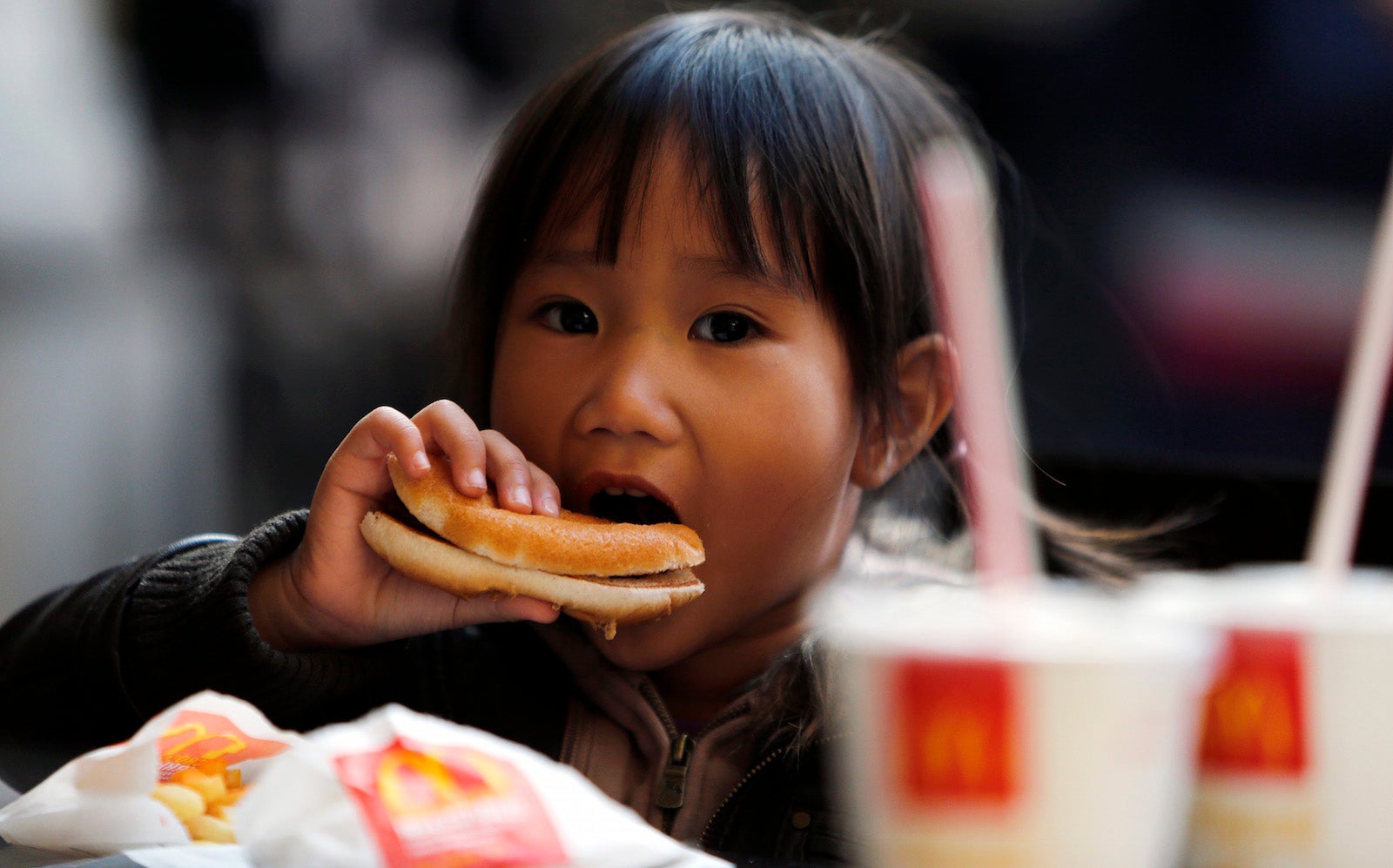An alarming share of American kids’ daily calories comes from fast food
Despite countless recent attempts to quell America’s love affair with fast food, its children are still scarfing down greasy hamburgers and salty French fries with a vengeance.


Despite countless recent attempts to quell America’s love affair with fast food, its children are still scarfing down greasy hamburgers and salty French fries with a vengeance.
Data released this month from the Centers for Disease Control and Prevention (CDC) show that one-third of young children (aged 2 to 11) and adolescents (aged 12 to 19) eat fast food on a given day. The CDC compiled its data from 3,100 extensive questionnaires given to American children and their parents in 2011 and 2012, asking what they had eaten in the last 24 hours. They found that the average share of children consuming fast food on any day, 34%, is roughly what it was a decade ago.
What’s more, the average amount of children’s daily calories coming from fast food, around 12% or 250 calories (incidentally, the equivalent of one small McDonald’s hamburger), hasn’t changed either. American adolescents are eating nearly double the amount of fast food calories as younger kids, suggesting that fast food becomes even more habitual as American children age.
The problem isn’t confined to the poor or minorities, according to the study. This supports previous research arguing that income level is not related to the quality of a person’s eating habits. In terms of race, the study did find that Asian children get roughly 4% fewer calories from fast food than white, black, or Hispanic children.
Childhood obesity, which afflicts roughly 17% of US children, is linked to fast food in part because it drives kids to consume more calories, fat, and sodium. As a result, children’s health advocates have argued, somewhat unsuccessfully, for limiting the number of fast food restaurants in a given area and stricter limits on fast food ads that target children.